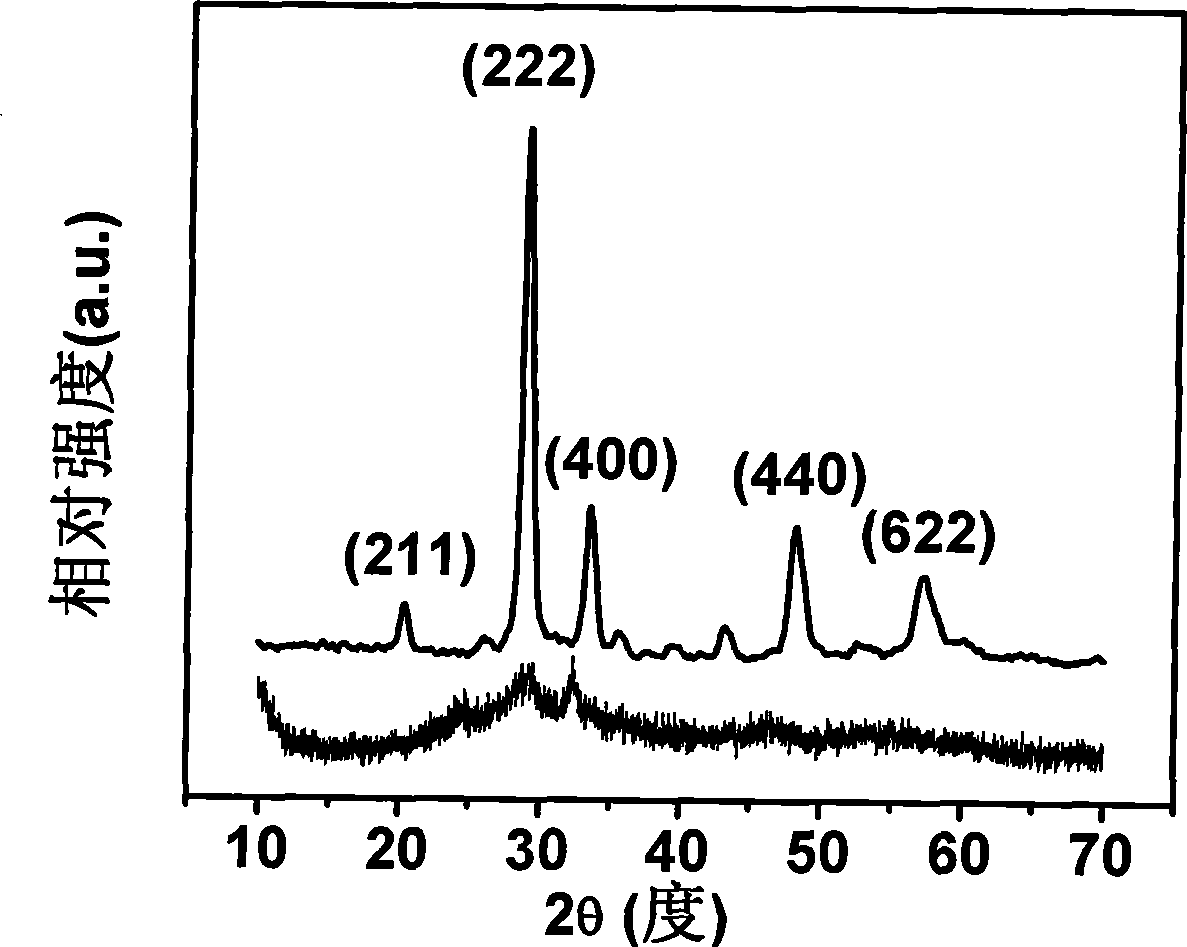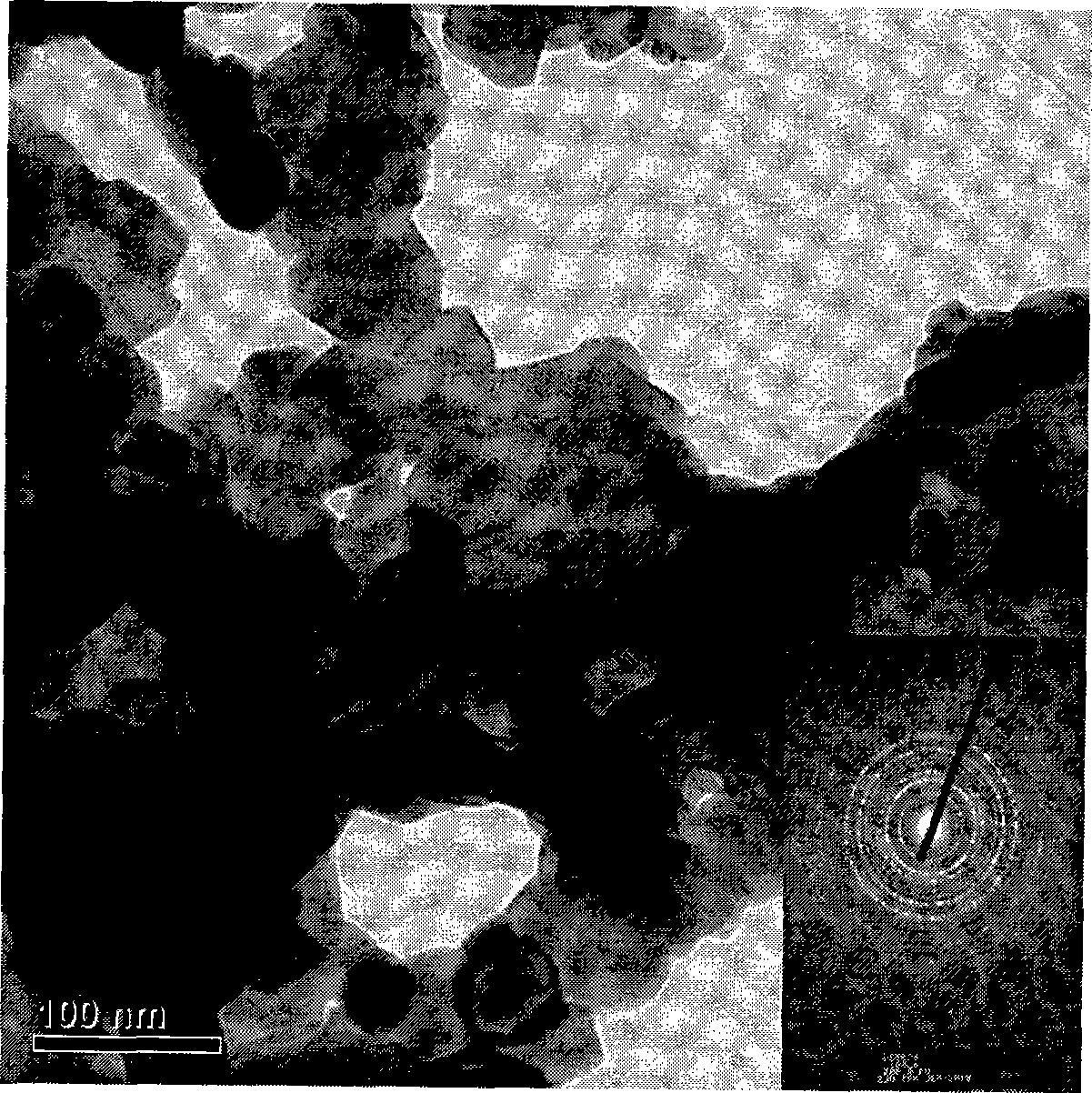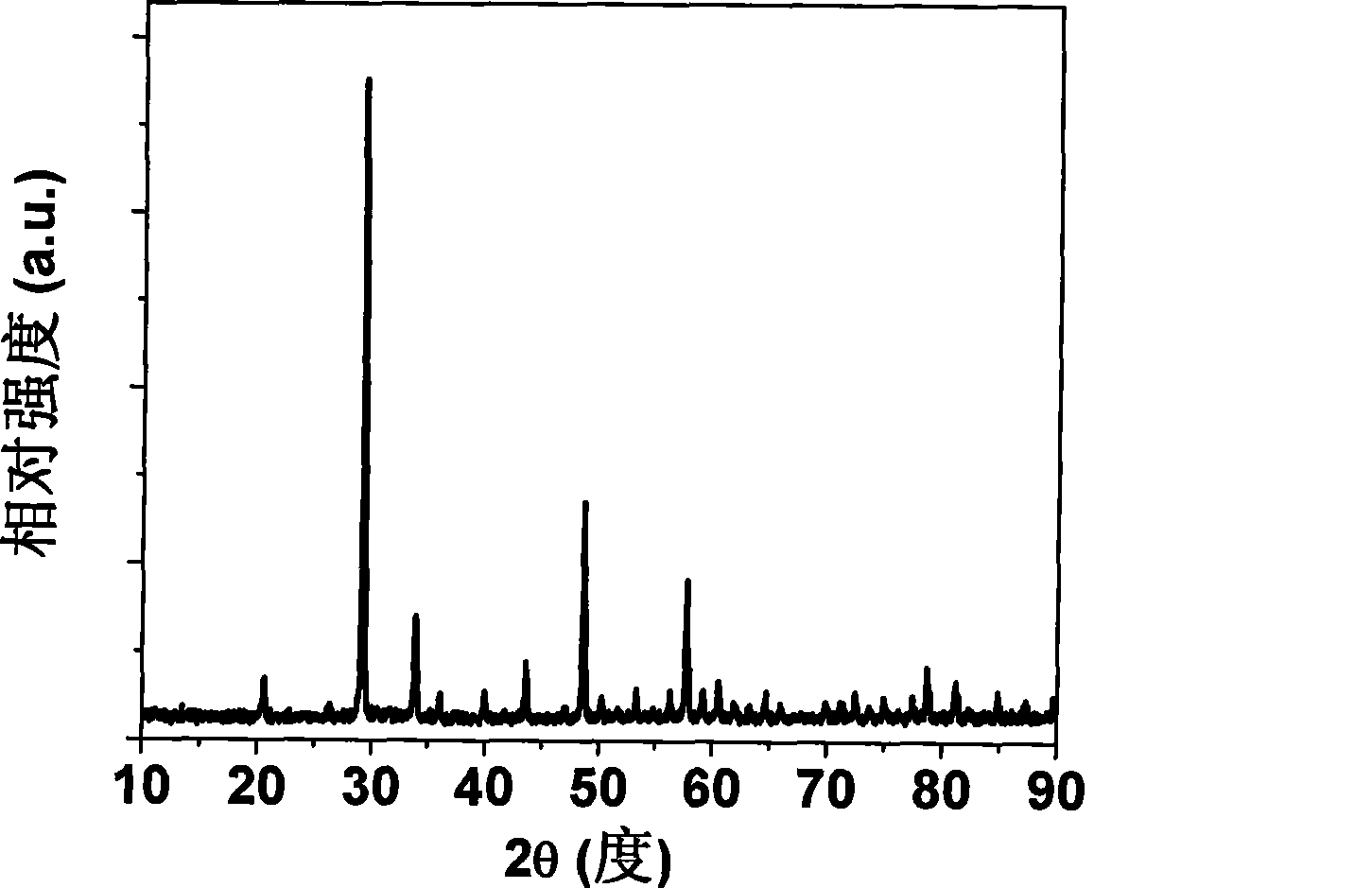Method for preparing lutetium gadolinium oxide transparent ceramic scintillator
A technology of gadolinium oxide lutetium and transparent ceramics, which is applied in the field of preparation of gadolinium oxide lutetium transparent ceramic scintillators, which can solve the problems of long decay time, unusability, and large afterglow, and achieve the effect of simple method, low cost, and simple equipment
- Summary
- Abstract
- Description
- Claims
- Application Information
AI Technical Summary
Problems solved by technology
Method used
Image
Examples
Embodiment 1
[0030] The preparation of transparent gadolinium lutetium oxide ceramics has four main steps, which are ceramic powder preparation, compression molding, sintering, annealing and processing.
[0031] Synthetic Gd 1.1 Lu 0.8 Eu 0.1 O 3 The transparent ceramic scintillator material uses lutetium nitrate, gadolinium nitrate and europium nitrate as starting materials, with a purity of 99.99%. The ratio is based on the stoichiometric ratio of lutetium nitrate: gadolinium nitrate: europium nitrate = 0.4: 0.55: 0.05. Add 0.001wt% neodymium nitrate when preparing the solution to suppress the afterglow. The above-mentioned rare earth nitrate is prepared into a nitrate solution, and then glycine is added to dissolve in the nitrate solution. The amount of glycine is 5 / 3 times that of nitrate. The prepared solution is placed in a ceramic crucible and heated on a heater. The temperature of the solution is increased to a certain degree to spontaneously ignite and emit gas to obtain a white loose...
Embodiment 2
[0038] The preparation of transparent gadolinium lutetium oxide ceramics has four main steps, which are ceramic powder preparation, compression molding, sintering, annealing and processing.
[0039] When synthesizing transparent ceramic scintillator materials, lutetium nitrate, gadolinium nitrate and europium nitrate are used as starting materials, and the purity is 99.99%. The ratio is based on the stoichiometric ratio of lutetium nitrate: gadolinium nitrate: europium nitrate = 0.09: 0.9: 0.01. When preparing the solution, 0.001wt% terbium nitrate is added to suppress the generation of afterglow. The above-mentioned rare earth nitrate is prepared into a nitrate solution, and then glycine is added to dissolve in the nitrate solution. The amount of glycine is 5 / 3 times that of nitrate. The prepared solution is placed in a ceramic crucible and heated on a heater. The temperature of the solution is increased to a certain degree and spontaneously ignites and emits gas to obtain a whit...
Embodiment 3
[0043] The preparation of transparent gadolinium lutetium oxide ceramics has four main steps, which are ceramic powder preparation, compression molding, sintering, annealing and processing.
[0044] When synthesizing the transparent ceramic scintillator material, lutetium nitrate, gadolinium nitrate and europium nitrate are used as starting materials, and the purity is 99.99%. The stoichiometric ratio of lutetium nitrate: gadolinium nitrate: europium nitrate = 0.9: 0.08: 0.02 is used for the ratio. The above-mentioned rare earth nitrate is prepared into a nitrate solution, and then glycine is added to dissolve in the nitrate solution. The amount of glycine is 5 / 3 times that of nitrate. The prepared solution is placed in a ceramic crucible and heated on a heater. The temperature of the solution is increased to a certain degree to spontaneously ignite and emit gas to obtain a white loose powder.
[0045] The above powder is pressed in a steel mold into a ceramic green embryo (φ10*10...
PUM
 Login to View More
Login to View More Abstract
Description
Claims
Application Information
 Login to View More
Login to View More - R&D
- Intellectual Property
- Life Sciences
- Materials
- Tech Scout
- Unparalleled Data Quality
- Higher Quality Content
- 60% Fewer Hallucinations
Browse by: Latest US Patents, China's latest patents, Technical Efficacy Thesaurus, Application Domain, Technology Topic, Popular Technical Reports.
© 2025 PatSnap. All rights reserved.Legal|Privacy policy|Modern Slavery Act Transparency Statement|Sitemap|About US| Contact US: help@patsnap.com



